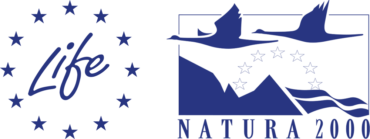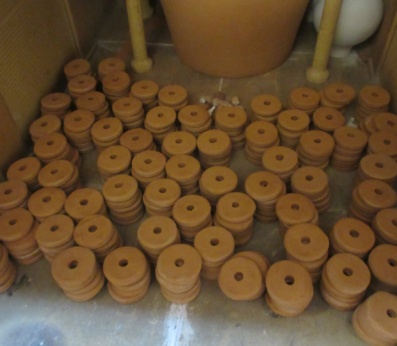Natural capital is a crucial concept in REEForest, since it allows humans to quantify an ecosystem value.
Otherwise how would we know if the restoration was successful?
We need to compare the ecosystem state before and after our action!
Sometimes it is not intuitive to understand what natural capital is, though!
We can imagine natural capital as a “treasure” comprising by Nature’s components (e.g. plants, animals and rocks) stocked in a habitat, which humans use each time they need it.
The value of natural capital shouldn’t only be understood as natural resources converted into a monetary value.
That would be a trivialization: we aren’t talking about how much fish, minerals or a landscape can be worth on the market!
We now know that ecosystems provide us with services, some of which are essential for us: healthy food, clean air and the enjoyment of natural beauty, for instance.
Without these resources and services, then we couldn’t survive. This treasure, moreover, is divided into different parts: some can be renewed, others only partially while others cannot at all.
When humans modify too much natural environments, nature’s ability to give us what we need is jeopardised. Like if we are take water from a well without ever letting it fill up again.
Ecosystems provide us with this “treasure” but we have to take care of it in order to continue to benefit from it, like restoring marine forests in our case!
Natural capital is the deposit that nature makes freely available to mankind: it generates yearly interests, as new resources.
Every year, our species withdraws the “liquidity” necessary for its own maintenance (the ecosystem services).
There’s therefore a budget between income and expenses, which must at least be even balanced. Otherwise, while the demand for maintaining our lifestyle will remain the same, it cannot be met by the interests generated as the system declines.
It’s obvious that all this calculation follows precise rules established by researchers, which is why every time we go underwater to monitor our Cystoseira , we collect a whole series of data needed to calculate the value of that portion of the marine ecosystem!
As we said, natural capital is the reserve of resources available to every human community that withdraws part of it for its own maintenance.
Moreover ecosystems, every year, generate new resources, as if they were interests on this deposit: we should use interests for our livelihood, without affecting deposit wealth.
If this happens the process is sustainable and implies that the value of our assets remains stable.
Knowing the value of the reserve we can check if there is a capital surplus or if our account is going bankrupt and therefore, we must protect it!
First, we understand what composes the ecosystem we are studying: from which resources is it fed? Who or what produces them? Who or what consumes them?
We begin with recognizing, counting, and weighing all living species, plants, and animals, that we find in the environment we are studying, from algae to fish.
That’s why operators delimit a portion of surface habitat, photograph it (to count individuals by species by computer processing) and remove a portion (as small as possible, to perform weight measurements in the laboratory).
But our calculation is not yet complete! We need to understand and quantify both how long it took to generate those species and how many environmental resources (e.g. rain, sun, food, oxygen) were used to generate and maintain them until today.
After this inventory, since these resources are expressed in different units of measurement, we must uniform to a sole one.
The unit of measurement chosen is the amount of equivalent solar energy: but how do you proceed to calculate it?
In a nutshell we study the biophysical processes that have led to the formation of a certain resource, analyzing the entire environmental assembly line to obtain it, up to the only energy resource that feeds the biosphere: the energy of the sun!
After this transformation we can add all the resources together and here is the value of our natural capital, comparable with any other (eco)system in the world!
The calculation of the marine ecosystem natural capital involves the characterization of the species present in it, their abundance and their biomass (a term with which we indicate their weight per unit of surface area).
For some marine species, often larger in size and historically studied (perhaps because they are of edible or generically commercial interest), such as many fish species, indices have been formulated that connect dimensional parameters (such as, for example, length or occupied surface area) to weight.
Thanks to these indices it is possible to obtain an estimate of the biomass starting from visual sampling of the populations: the individuals are observed, counted and measured directly on site or photographs or videos are taken from which, in a subsequent phase, the necessary data are obtained.
Unfortunately, these indices have not yet been calculated for the plant and animal organisms that populate the mysterious forests created by algae, whose importance has only become apparent in recent decades, when the numerous ecological functions they perform have been highlighted and it has been better understood.
This implies that, to calculate the biomass it is necessary to carry out destructive sampling, that is, to take small portions of the ecosystems to analyze in the laboratory.
But REEForest researchers want to protect algal forests, not destroy them!
Therefore, precisely because they are destructive, these samplings can be carried out in limited numbers and therefore do not allow constant monitoring of natural capital.
But this monitoring is necessary to understand the effectiveness of recovery actions.
For these reasons, REEForest researchers are working to find methods of estimating biomass starting from photographic or video images, or developing new non-destructive methods, so as to be able to carry out studies with total respect for the environment.



